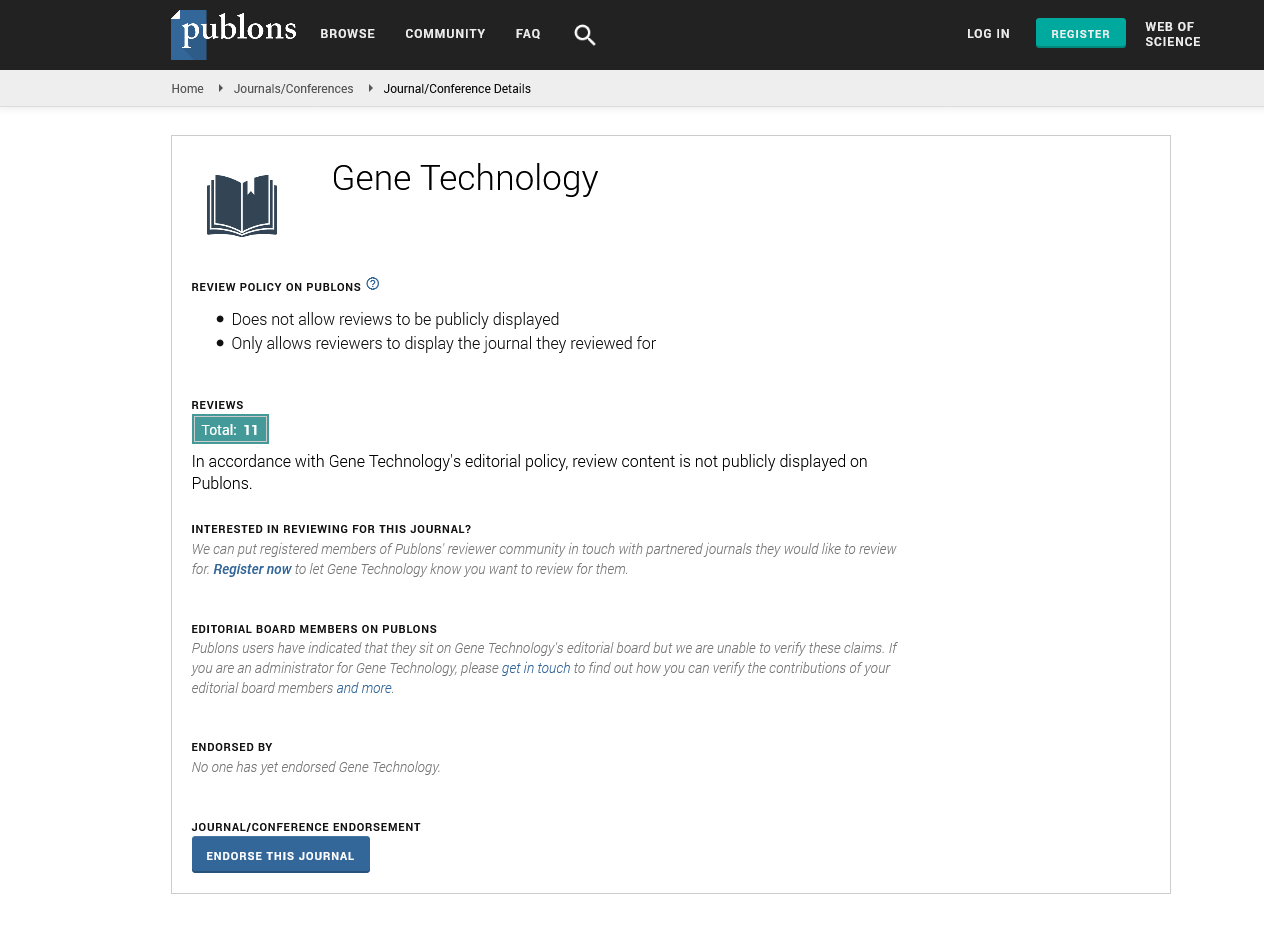Indexed In
- Academic Keys
- ResearchBible
- CiteFactor
- Access to Global Online Research in Agriculture (AGORA)
- RefSeek
- Hamdard University
- EBSCO A-Z
- OCLC- WorldCat
- Publons
- Euro Pub
- Google Scholar
Useful Links
Share This Page
Journal Flyer

Open Access Journals
- Agri and Aquaculture
- Biochemistry
- Bioinformatics & Systems Biology
- Business & Management
- Chemistry
- Clinical Sciences
- Engineering
- Food & Nutrition
- General Science
- Genetics & Molecular Biology
- Immunology & Microbiology
- Medical Sciences
- Neuroscience & Psychology
- Nursing & Health Care
- Pharmaceutical Sciences
Opinion Article - (2022) Volume 11, Issue 1
Note on Epigenetic Modification
Devos Andrade*Received: 01-Feb-2022, Manuscript No. RDT-22-16122; Editor assigned: 03-Feb-2022, Pre QC No. RDT-22-16122 (PQ); Reviewed: 17-Feb-2022, QC No. RDT-22-16122; Revised: 23-Feb-2022, Manuscript No. RDT-22-16122 (R); Published: 28-Feb-2022, DOI: 10.35248/2329-6682.22.11.185
Description
Epigenetics is the study of genetic and stable changes in gene expression due to changes in chromosomes rather than DNA sequences. Although the DNA sequence is not directly altered, epigenetic mechanisms can regulate gene expression through chemical modification of DNA bases and changes in the chromosomal superstructure in which the DNA is packaged.
The negatively charged DNA is packed around a positively charged histone protein octamer containing two copies of the histone proteins H2A, H2B, H3, and H4. This nucleoprotein complex is the nucleosome, the basic unit of chromatin. The nucleosomes of the continuous DNA polymer are linked by linker DNA and the complex is stabilized by the histone protein H1. Chromatin aggregation leads to the formation of chromosomes. Chromosomal chromatin exists as loose, transcriptionally active euchromatin, or as dense, transcriptionally inactive heterochromatin. Chemical changes in histone proteins can induce the formation of an open euchromatin state, which facilitates gene expression by allowing transcription factors and enzymes to interact with DNA, or heterochromatin. Closed state, which suppresses gene expression by preventing the initiation of transcription.
In addition to histone changes, DNA methylation is an epigenetic mechanism involved in gene silencing when methylation occurs on CpG islands of promoter sequences. In addition, non-coding RNA sequences have been shown to play an important role in regulating gene expression. These epigenetic alterations can be caused by several factors, including age, diet, smoking, stress, and disease conditions. Although epigenetic alterations are reversible, they are rarely conserved for several generations in humans, despite the fact that they persist for multiple cycles of cellular replication.
DNA is used as a guide to make coding and non-coding RNAs. Coding RNA is used to make proteins. Noncoding RNA helps control gene expression by binding to coding RNA, as well as some proteins, to break down coding RNA so it cannot be used to make proteins. Noncoding RNA can also recruit proteins to modify histones to turn genes on or off.
Epigenetics and development
Your epigenetics change as you grow older, as part of normal development and aging, and depending on your behavior and environment. Epigenetic change begins before birth. All cells carry the same gene, but they look and behave differently. Epigenetics help determine how cells function as they grow and develop, for example, whether they are heart cells, nerve cells, or skin cells. Example: Nerve cells and muscle cells.
Your muscle cells and nerve cells have the same DNA but different functions. Nerve cells carry information to other cells in your body. Muscle cells have structures that help your body move. Epigenetics allows muscle cells to "on" genes and make proteins important for their work, and "off" genes to make them important for the work of nerve cells.
Epigenetics and age
Your epigenetics will change throughout your life. Birth epigenetics is not the same as childhood or adult epigenetics.
DNA methylation at millions of sites was measured in newborn, 26 years, and 103 years. The level of DNA methylation decreases with age. DNA methylation in new borns was highest, DNA methylation at 103 years was lowest, and DNA methylation levels at 26 years were between neonates and at 103 years.
Citation: Andrade D (2022) Note on Epigenetic Modification. Gene Technol. 11:185.
Copyright: © 2022 Andrade D . This is an open access article distributed under the terms of the Creative Commons Attribution License, which permits unrestricted use, distribution, and reproduction in any medium, provided the original author and source are credited.

